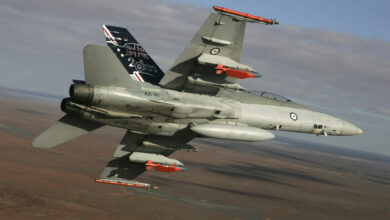India flight-tests BrahMos cruise missile twice in two days
Updated May 22
India successfully conducted a flight test of its BrahMos supersonic cruise missile on Monday, May 21, in a trial to validate life extension technologies, officials said.
The missile was test-fired from a mobile launcher at the Integrated Test Range at Chandipur at 10:40 a.m., Defence Research and Development Organisation officials said.
An ITR official told PTI that the trial was aimed at validating “life extension” technologies developed in India by DRDO and team BrahMos.
Raksha Mantri (Defence Minister) Nirmala Sitharaman tweeted that “the successful test will result in huge savings of replacement cost of missiles held in the inventory of Indian Armed Forces.”
Update May 22 A second test of BrahMos was conducted successfully at 11:45 a.m. on Tuesday, May 22 from the Integrated Test Range, Balasore, Odisha, the government Press Information Bureau said in a release.
The missile was launched from a Mobile Autonomous Launcher, and was intended to test “major subsystems manufactured indigenously” under the “Make in India” initiative.
“Through this launch the critical indigenous components including fuel management system and other non-metallic airframe components have qualified to form part of the missile” Sudhir Mishra, chief executive and managing director of BrahMos Aerospace which develops the missile said.
The BrahMos is a supersonic medium-range liquid-fuelled ramjet-powered cruise missile that can be launched from sea, land and air. It is a two-stage missile, with a solid-fueled first stage to bring it to supersonic speed.
It is manufactured in Hyderabad by BrahMos Aerospace, a joint venture between India’s DRDO and Russia’s NPO Mashinostroeyenia.
The missile is based on Russia’s P-800 Oniks anti-ship cruise missile and the 3M55 missile.
BrahMos reportedly has a top speed of around Mach 2.8. Surface-launched missiles can carry a 200 kg warhead, while the air-launched variant can carry a 300 kg payload.
In December 2016, Jane’s reported that India and Russia had agreed to undertake “joint technical development work” to extend the missile’s range beyond 292 km, after India joined the Missile Technology Control Regime. Prior to full MCTR membership, the missile was limited to a maximum range of 300km.
A new extended range variant with a range “far beyond 400km” was tested in March 2017, and in November, the missile was successfully test-fired from an Indian Air Force Sukhoi-30 MKI fighter jet.
In March, India successfully flight tested a BrahMos fitted with an indigenous seeker.
At the end of April, Sudhir Mishra, chief executive and managing director of BrahMos Aerospace which develops the missile, said that BrahMos is already the fastest cruise missile in the world, but that its top speed will reach Mach 3.5 soon and the current engine will be “tinkered” to reach Mach 5 in three years.
Mishra said the engine will be replaced to achieve hypersonic speed (greater than Mach 5), but said that it will reach Mach 7 in the next decade.
India has conducted a number of missile tests in recent months.
In late February, the nuclear-capable Dhanush short-range missile, the Agni-II medium range ballistic missile and the Prithvi-II short-range missile were tested. Earlier that month, the medium-range Agni-I and short-range Prithvi-II were tested.
In January, India’s nuclear-capable Agni-V intercontinental ballistic missile was successfully tested for the fifth time.











